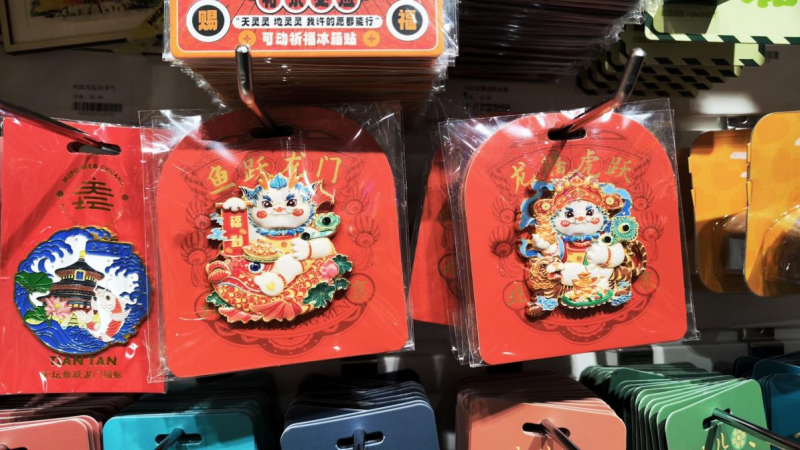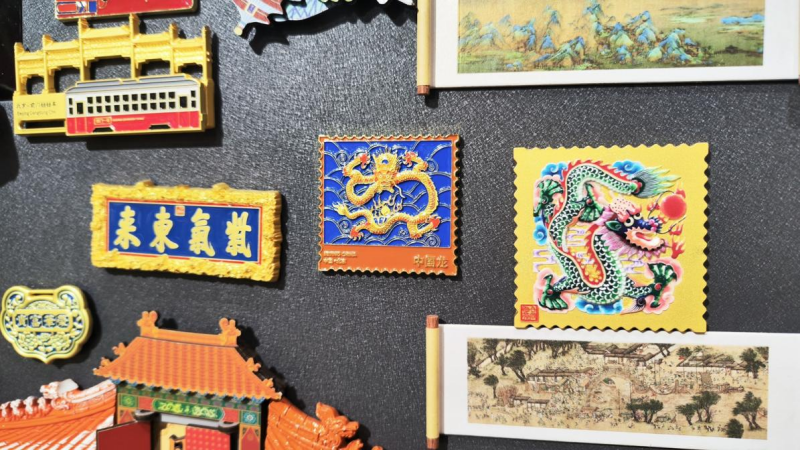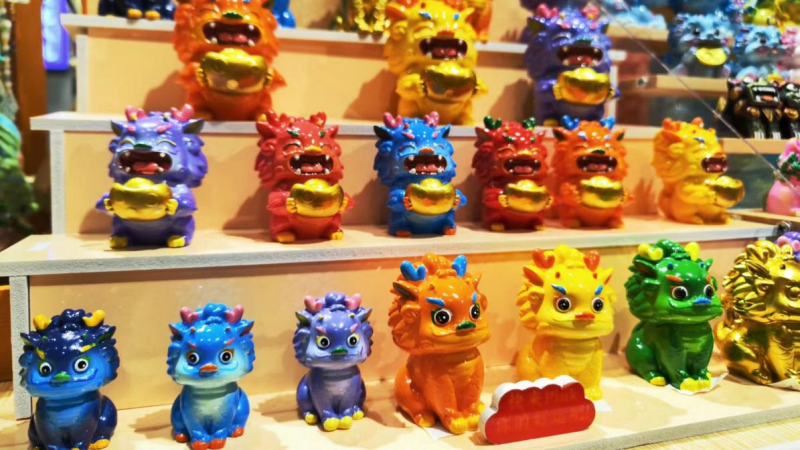
“Where can I buy it?” “Please, I need a surrogate shopper”...Comments like these take up quite a share in the comment section of a post on Xiaohongshu, a popular lifestyle-sharing social platform in China.
What triggers the netizens’ impulse to buy? The cover photo reveals the answer.
Against the clear blue sky, the golden embossment of a dragon is a sharp contrast to its crimson background, forming an eye-catching lure to Chinese netizens and their purchase intention. According to the comment section, this product is snapped up soon, say within just a few days, and the factory has been working extra shifts for a new batch to meet the surging demands. Many people hashtagged “dragon year cultural products” and posted pictures of the same fridge magnet they had purchased, claiming “going through a lot to buy it,” “my cultural product of the year.”
The Year of the Dragon will start on Feb. 10, 2024. As the lunar new year approaches, the cultural and creative industries have seen a wide range of dragon-themed merchandise flooding into the market: fridge magnets, holiday cards, ornaments, even hats and clothes...From major brands to specialty stores, from online channels to offline shops, the “dragon fever” prevails as Chinese people are preparing for the arrival of China’s most important traditional holiday of the year.
Meanwhile, major museums have launched promotion schemes for new themed products and achieved impressive sales figures. The cultural and creative product studio of the Palace Museum in Beijing, for instance, has sold more than 20,000 copies of the original dragon-featured calendar on its Taobao flagship store.
Dragon patterns, together with other festive elements, made the dragon-themed cultural product a hit among Chinese young people and fans of traditional Chinese culture.
Transformations also took place when developing dragon-themed cultural products. The cultural product studio of the Suzhou Museum has launched a new product: a "cute dragon” plush pendant. The august, majestic gold dragon is transformed into a fluffy, adorable companion, winning many consumers at stores and followers on social media.
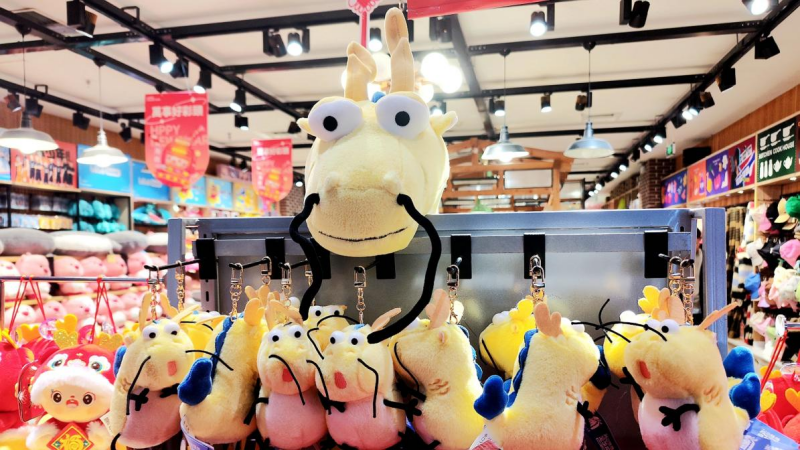
Museums are not alone in their attempt to make dragon-themed cultural products trendy in the New Year market. Stores featuring Chinese homegrown brands, or Guochao specialty stores, and individual designers, are also taking shares in the market.
On Wangfujing Shopping Street, a Guochao specialty store that adapts elements of traditional Chinese culture to fit modern fashion trends, has drawn young consumers’ attention with an array of dragon cultural products. The holiday boom has attracted an increasing number of customers into the shop to purchase and post on social media.
“Our sales start to surge as the lunar new year is close at hand,” a sales clerk at a cultural and creative specialty shop on Wangfujing Shopping Street in Beijing told Xinhuanet. “Currently, we can sell more than 100 pieces of New Year-themed products in one weekend. The best seller is out of stock now,” she added.
On the shelves behind her, more than a dozen dragon-featured fridge magnets are neatly lined up. The shop also sells dragon-shaped ornaments, holiday cards with traditional dragon patterns, and dragon head hats for children.
Other than the mere use of dragon patterns, cultural and creative brands have been played with ideas to win over customers. For instance, the sales clerk introduced a hot item to Xinhuanet: a fridge magnet shaped like a dragon robe owned by Emperor Qianlong of the Qing Dynasty. Its delicate pattern of the dragon, its rich cultural connotation and the good wishes it carries, make this product one of the most popular and best-selling items.
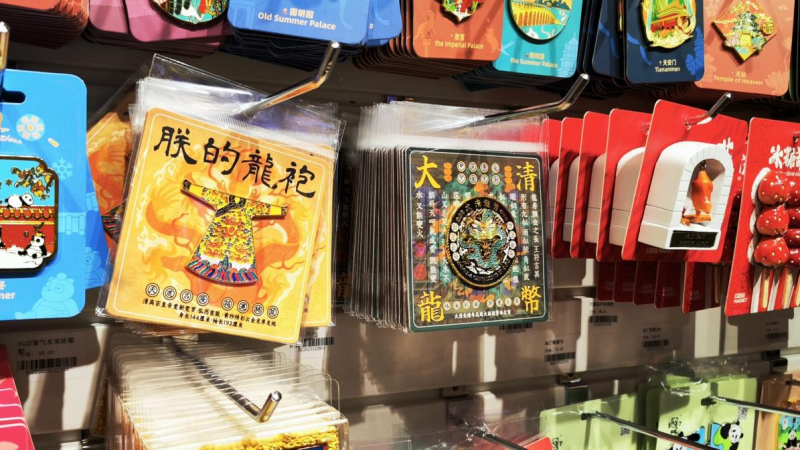
The Chinese dragon is regarded as an auspicious, noble creature, and is believed to bring good luck and fortune.
At the beginning of the Year of the Dragon, many Chinese people expect to refresh themselves with the blessings and positive energy from the dragon. In addition, the cultural significance of the dragon plays an important role in shaping Chinese people’s preferences.
As an integral part of Chinese culture, portraits of dragons are quite common in ancient Chinese art, literature and customs, offering a diversity of sources of inspiration for designers.
“The design concept of mine is quite simple: to convey my gratitude and best wishes for the new year,” individual designer San Guai told Xinhuanet. The brand IP by San Guai features a cute cartoon figure wearing a big dragon head hat who participates in various festive activities.
Derivative products of this IP, including prints and badges, are sold offline in 15 cities across China. “It may sound simple, but it’s the true aspiration of me and my friends,” she added.
